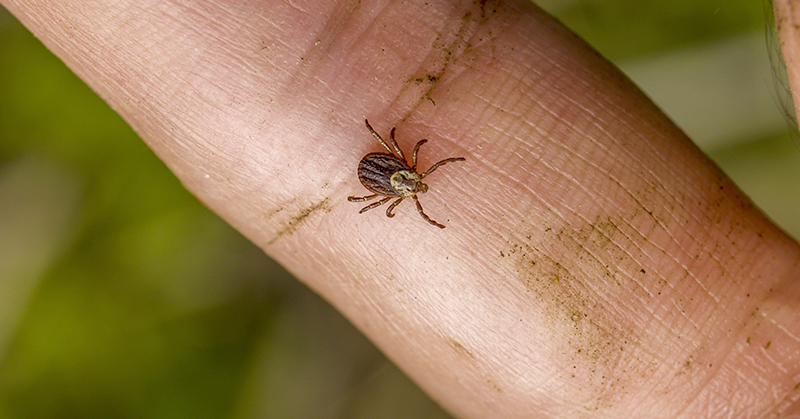Diseases such as Lyme Disease or Powassan Disease, when administered through a tick bite, can be passed into your body within 24 hours, or in the case of Powassan Disease, 15 minutes, and can result in permanent disability. This makes it crucial to remove all ticks as quickly as possible.
Peppermint Essential Oil: The Fake Tick Removal Tip

Unfortunately, there’s a viral video showing an incorrect tip for how to remove a tick, and it is putting the thousands of people watching it at risk. In the video, a woman is shown dousing a tick that had attached its head to her leg, in peppermint oil. The tick floats up, detaches itself, and crawls away, attempting to escape the siege with peppermint oil. (1)
While yes, this appears to work, as the peppermint oil essentially “burns” the tick, there are a number of reasons why this is dangerous:
- You are waiting for the tick to detach itself. As we mentioned already, some diseases that ticks carry can be passed into the host within minutes of being bitten. Using this method, you pour the oil on and wait for the tick to remove itself, allowing time for viruses and bacteria to be transmitted. (1, 3)
- You are agitating the tick more. The diseases that ticks carry are passed along to hosts via their saliva. When biting a host, the tick is salivating, and when agitated, the tick panics and salivates more. The peppermint oil is overwhelming for the tick and will eventually kill it, but in the meantime, it has upped its saliva production right into the open wound of the bite. (1, 2)
- Peppermint Oil can be too harsh for your own skin. On top of the increased danger, you put yourself in a contracting Lyme and Powassan disease, applying peppermint oil directly to your skin can cause burns.
Read More: Summer is Here… So are the Ticks
Other Folklore Remedies
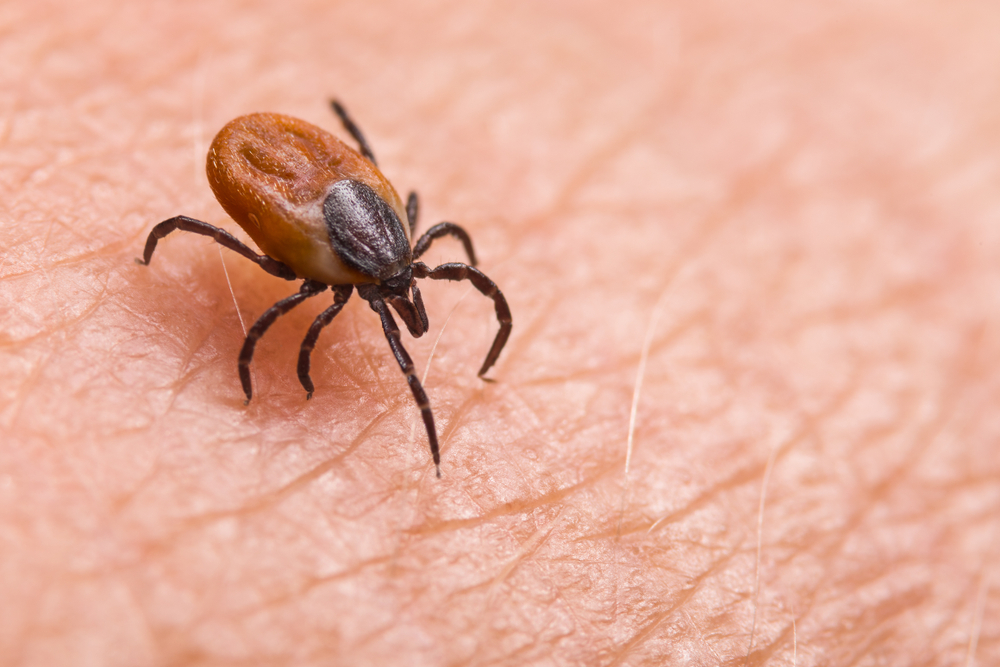
Other fake tick removal tricks you may encounter on the internet include painting the tick with nail polish, covering it in petroleum jelly, or attacking it with heat. All of these have similar problems to the peppermint oil trick and should not be used to remove ticks. (1, 2) Ticks present a serious health threat to North Americans. They can transmit dangerous, debilitating, and life-altering diseases that should never be brushed aside or thought of as only a casual threat.
A Missouri mother’s life was actually taken after complications caused by a tick bite…

Tamela Wilson worked at Meramec State Park for ten years and was no stranger to tick bites. She was used to them and would usually just remove them with no problems. However, unlike every other time, Wilson fell very ill about two days later. Initially, Wilson’s doctor diagnosed her with a urinary tract infection. But after her symptoms worsened (e.g., severe headaches, pain, and a red rash) and antibiotics failed, doctors ran further tests and found that she had a very low white blood cell count.
“She literally couldn’t even pick up her phone. She had no strength,” May told CBS News. “My sister had been calling her and couldn’t get a hold of her. My mom said the phone was right there ringing, but she could not pick it up to answer it.”
Read More: DIY Bug Bite Relief Stick To Help Sooth Pain and Swelling
Even after several skin biopsies and tick-related blood tests, everything returned negative…

As Wilson’s symptoms got even worse, she developed a condition that caused the body to develop too many immune cells called hemophagocytic lymphohistiocytosis. The condition was what caused a red rash. Wilson’s daughter, Amie May, was shocked:
“I’m a nurse and I’ve never seen anything like I’d seen my mother’s mouth. It got so bad toward the end that she couldn’t talk, drink, or eat — nothing.”
At a complete loss for what to do, the CDC even tested Wilson’s blood. They later confirmed she had the rare and currently incurable Bourbon virus. Although they don’t know exactly how people get infected with the Bourbon virus, experts say it likely spreads through insect bites, including ticks. Bourbon virus may have these symptoms:
- Fever
- Tiredness
- Rash
- Headache
- Other body aches
- Nausea
- Vomiting
- Low blood counts for cells that fight infection and help prevent bleeding
Sadly, Tamela Wilson lost her battle with the Bourbon virus and passed away three weeks later. That’s why her family has taken to the media to warn people of the dangers of tick bites. Although the Bourbon virus is rare, there are more common diseases you must be aware of…
How to Prevent Ticks
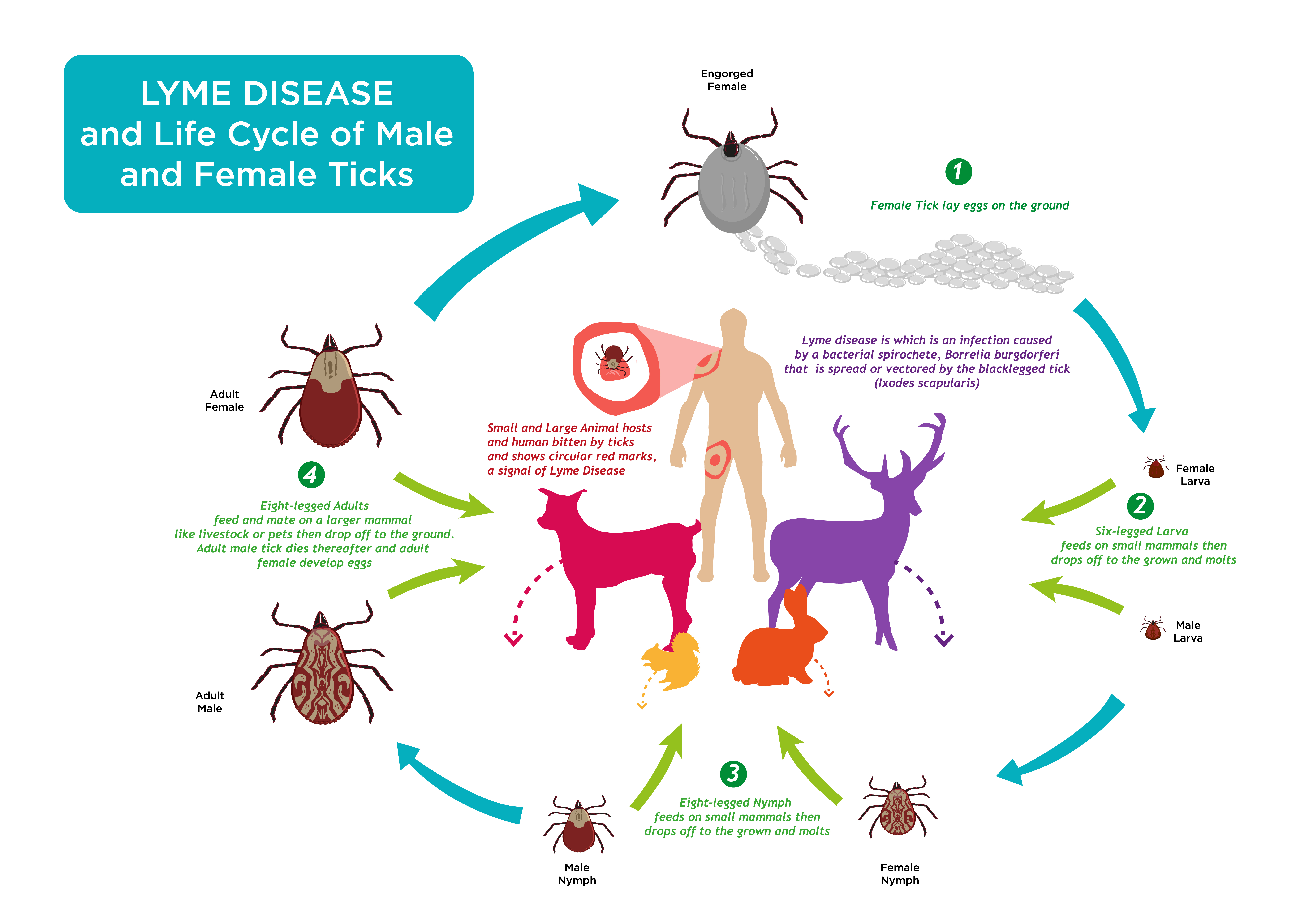
The best way to avoid tick bites and tick-borne illnesses is to avoid getting bitten altogether! There are several steps you can take before, during, and after spending time outdoors to stop ticks in their tracks: (2)
- Know what areas are high risk. This includes moist, damp, and humid environments; wooded areas, and tall or bushy grasses. That being said, you can still encounter ticks in your own backyard, so be vigilant!
- Consider treating clothing and outdoor gear with special tick repellents, especially when going camping or hiking.
- Always use insect repellent (be mindful of warnings for infants, toddlers, and young children.)
- Check clothing for ticks when you come inside. Any ticks found should be removed, and clothes should be tumble-dried or washed in hot water to kill any remaining ticks.
- Shower soon after coming inside. Not only will this wash off any unattached ticks, but it will also provide a good opportunity to do a full-body tick check.
- Check your body immediately after coming inside. Be sure to check under your arms, in and around your ears, inside your belly button, behind your knees, in and around your hair/hairline, between your legs, and around your waist. You may need help to check hard-to-reach places.
How to Remove a Tick Properly
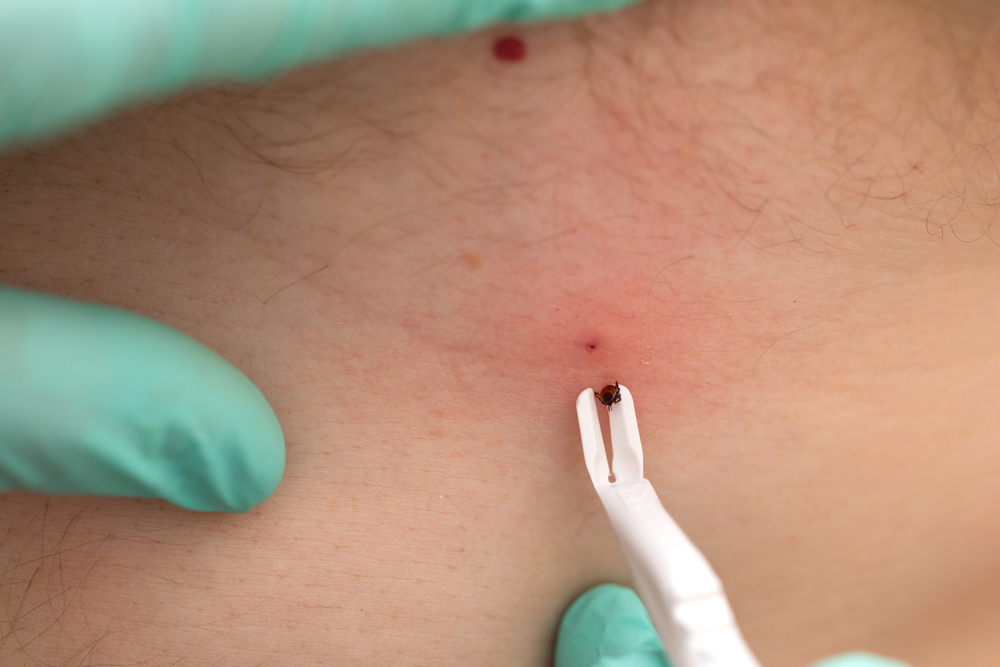
If you do find a tick that has attached itself (buried its head) to your skin, stay calm and remove it immediately. The following are steps from the CDC on how to safely and effectively remove ticks from your skin: (3)
- Using a pair of fine-tipped tweezers, grasp the tick as close to the skin as possible, being careful to keep the head intact.
- Pull straight up, applying even pressure as you do so. Do not twist, jerk, or squeeze the tick.
- Place the tick in a sealed plastic bag, wrap it in tape, or flush it down the toilet. Before discarding, however, check your municipality for tick removal regulations. Some prefer you to send any ticks you find in for testing.
- Wash the bite and your hands thoroughly with rubbing alcohol, soap, and water.
- For the next few days, keep an eye out for a rash or fever to develop. If that happens, go to your doctor immediately.
How to Check for and Remove Ticks from Your Pet
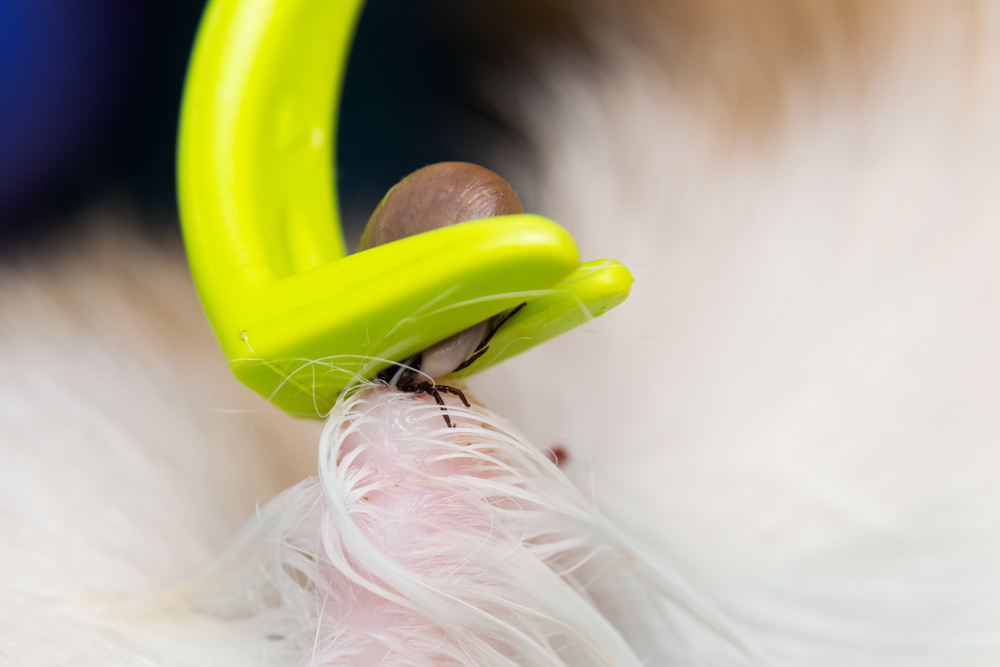
Dogs and outdoor cats are susceptible to Lyme disease as well, and it can cause painful swelling in their joints and commonly causes lameness. Their fur makes it easy for ticks to grab onto and hide in, so checking your pets regularly for ticks will help to protect them from contracting life-threatening diseases. (4) Check out this video to learn how to properly check and remove ticks from your pet or go here for more info on tick safety for your pets.
When the right precautions are taken, you and your family can still enjoy the outdoors this spring and summer. Follow the advice of experts and don’t pay attention to fake “tips” online, and you are sure to have a happy, healthy warm weather fun! Help us spread awareness of this fake tick tip by sharing this article with your friends and family.
Read More: How to Safely Remove and Dispose of Tick Eggs from Your Home and Yard
Sources
- https://www.goodhousekeeping.com/health/wellness/news/a44272/tick-removal/?t=THA
- https://www.cdc.gov/ticks/removing_a_tick.html
- https://www.humanesociety.org/resources/what-do-if-you-find-tick-your-dog
